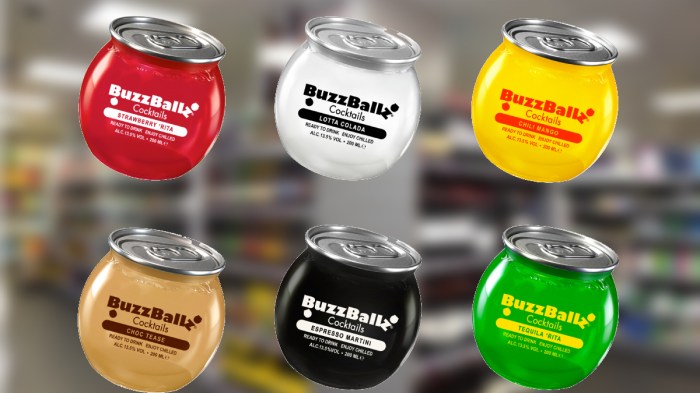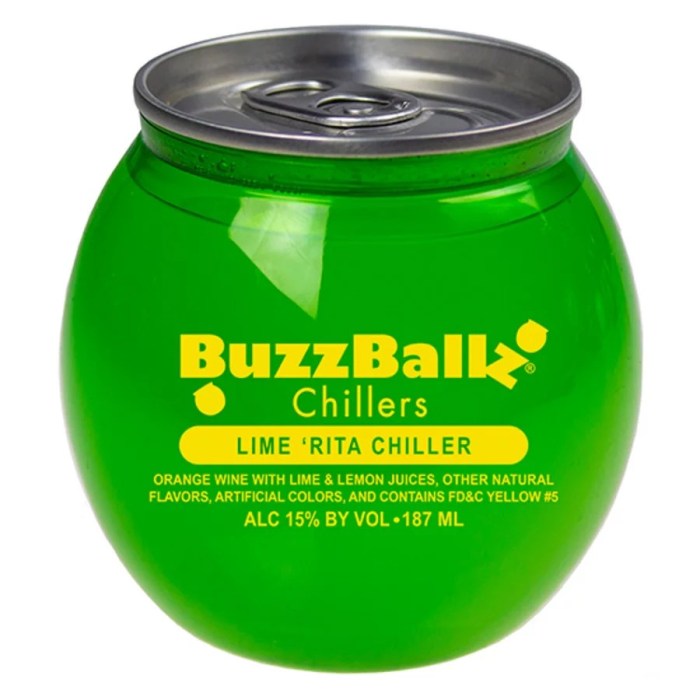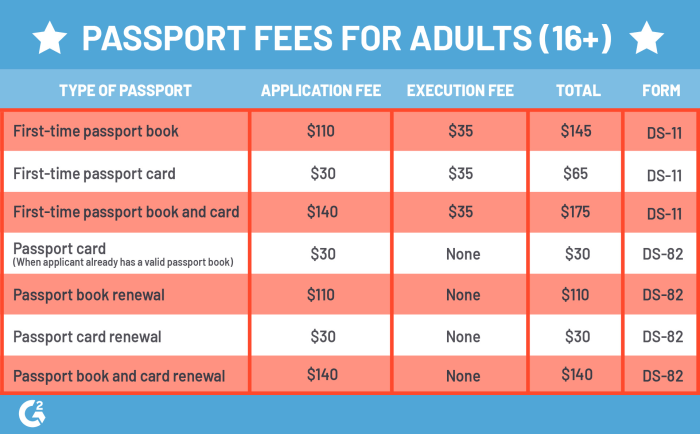How much do buzzballs cost? This intriguing question embarks us on an enlightening journey, unraveling the intricate factors that shape the price of these beloved toys.
From the raw materials to the manufacturing processes and market trends, we delve into the fascinating world of buzzballs, deciphering the complexities that determine their value.
Cost Factors of Buzzballs

The cost of buzzballs can vary depending on several factors, including the materials used, the production methods employed, and the shipping costs involved.
Materials used in the construction of buzzballs can significantly impact their cost. Buzzballs made from higher-quality materials, such as durable plastics or metals, tend to be more expensive than those made from less expensive materials, such as foam or rubber.
Production Methods
The production methods used to create buzzballs can also affect their cost. Buzzballs that are mass-produced using automated processes tend to be less expensive than those that are handcrafted or made in small batches.
Shipping Costs
The cost of shipping buzzballs can also vary depending on the distance they need to be shipped and the shipping method used. Buzzballs that need to be shipped long distances or using expedited shipping methods tend to be more expensive than those that can be shipped short distances or using standard shipping methods.
If you’re wondering how much buzzballs cost, it’s a good idea to check out gen korean bbq menu sides for a wide selection of options. With their delicious flavors and affordable prices, you’re sure to find something that fits your budget and satisfies your cravings.
After exploring the menu sides, don’t forget to come back and find out the latest buzz on buzzball costs!
Examples of Buzzball Costs
- A basic foam buzzball can cost around $5.
- A durable plastic buzzball can cost around $10.
- A handcrafted wooden buzzball can cost around $20.
- A high-quality metal buzzball can cost around $30.
Market Analysis of Buzzball Prices
The market for buzzballs has experienced significant fluctuations in recent years, influenced by various factors such as supply and demand, production costs, and consumer preferences. Understanding the current market prices and trends is crucial for both buyers and sellers.
Regional Price Variations
Buzzball prices vary across different regions due to factors such as transportation costs, import duties, and local market conditions. In general, buzzballs tend to be more expensive in regions with higher demand and limited local production.
- North America:Typically has higher prices due to strong demand and limited domestic production.
- Europe:Prices are generally moderate, influenced by local production and competition from Asian manufacturers.
- Asia:The largest producer of buzzballs, resulting in lower prices due to economies of scale and proximity to raw materials.
Pricing Trends Over Time
Buzzball pricing has shown an overall upward trend in recent years, driven by increasing demand and rising production costs.
- Pre-2020:Prices were relatively stable, with gradual increases due to growing popularity and inflation.
- Post-2020:The COVID-19 pandemic disrupted supply chains and increased demand for home entertainment products, leading to a sharp rise in buzzball prices.
- Current Trend:Prices have stabilized somewhat but remain elevated compared to pre-pandemic levels.
Factors Driving Price Changes
Several factors contribute to changes in buzzball pricing, including:
- Raw Material Costs:Fluctuations in the prices of raw materials, such as rubber and plastic, can impact production costs.
- Production Capacity:Limited production capacity can lead to supply shortages and higher prices.
- Demand and Seasonality:Increased demand during peak seasons or special events can drive up prices.
- Retailer Margins:Retailers set prices based on their profit margins and competitive landscape.
Pricing Strategies for Buzzballs: How Much Do Buzzballs Cost

Manufacturers and retailers employ various pricing strategies to sell buzzballs, influencing consumer demand and brand perception.
One common strategy is cost-plus pricing, where the price is set based on the production costs plus a profit margin. This approach ensures a reasonable profit but may not always reflect market demand.
Competitive Pricing
To gain market share or compete with rivals, companies may use competitive pricing. They set prices comparable to or slightly lower than those of competitors, considering factors like product quality, brand reputation, and market positioning.
Value Pricing
Value pricingfocuses on offering a product perceived as providing greater value to customers than its price suggests. By emphasizing unique features, high quality, or exclusive benefits, companies can justify higher prices while maintaining customer satisfaction.
Price Bundling
Price bundlinginvolves selling multiple products or services together at a reduced price compared to buying them separately. This strategy can increase perceived value, clear inventory, or attract new customers.
Psychological Pricing
Psychological pricingleverages consumer psychology to influence purchasing decisions. Tactics like setting prices ending in “99” or using odd-even pricing (e.g., $19.99 vs. $20.00) can create the illusion of a better deal.
Pricing strategies play a crucial role in shaping consumer perceptions, driving demand, and establishing brand positioning in the buzzball market.
Comparison of Buzzball Costs Across Brands

The cost of buzzballs can vary significantly across brands, depending on factors such as materials, features, and brand reputation. To help you make an informed decision, here’s a table comparing the costs of buzzballs from different brands:
| Brand | Cost | Key Features | Value Proposition |
|---|---|---|---|
| BuzzBee | $10-$20 | Lightweight, durable, various colors | Value for money, good for beginners |
| Nerf | $15-$30 | High-quality materials, innovative designs | Durability, performance, brand recognition |
| X-Shot | $12-$25 | Unique designs, ergonomic handles | Comfort, accuracy, stylish appearance |
| Adventure Force | $8-$15 | Affordable, basic designs | Budget-friendly, suitable for casual play |
| Dart Zone | $18-$35 | Precision engineering, advanced features | Accuracy, range, competitive advantage |
Factors Contributing to Price Differences
The price differences between brands can be attributed to several factors, including:
- Materials:Higher-quality materials, such as durable plastics and foams, increase production costs.
- Features:Innovative features, such as ergonomic handles, adjustable weights, and advanced firing mechanisms, add to the cost.
- Brand Reputation:Well-established brands with a reputation for quality and innovation can command higher prices.
- Production Costs:Differences in manufacturing processes, labor costs, and supply chain efficiency impact the overall cost of production.
Online vs. Offline Buzzball Pricing

When considering the purchase of buzzballs, it is essential to understand the potential price differences between online and offline retailers. This section will delve into the factors that influence these variations and provide insights into the cost dynamics of both channels.
Factors Influencing Price Differences
- Shipping Costs:Online retailers often incur additional expenses for packaging and shipping buzzballs to customers, which can be reflected in the final price.
- Overhead Expenses:Offline retailers typically have higher overhead costs, such as rent, utilities, and staffing, which can contribute to higher prices.
- Market Competition:Online retailers face intense competition, which can lead to lower prices due to price wars and discounts.
Advantages of Online Buzzball Pricing
- Convenience:Online shopping offers the convenience of purchasing buzzballs from home or anywhere with an internet connection.
- Wider Selection:Online retailers often have a wider selection of buzzballs compared to offline stores, allowing customers to find specific models or brands.
- Price Comparisons:Online marketplaces make it easy to compare prices from multiple retailers, enabling customers to find the best deals.
Advantages of Offline Buzzball Pricing
- Immediate Availability:Offline stores provide immediate access to buzzballs, eliminating shipping time and the risk of damage during transit.
- Personal Assistance:Customers can receive personalized assistance from store staff, who can provide advice and help with product selection.
- No Shipping Costs:Offline purchases do not incur shipping costs, which can save customers money.
Ultimately, the best choice between online and offline buzzball pricing depends on individual preferences and circumstances. Online retailers offer convenience, wider selection, and potential price savings, while offline stores provide immediate availability, personal assistance, and no shipping costs.
Seasonal Variations in Buzzball Costs
The cost of buzzballs can fluctuate based on seasonality. During peak seasons, such as summer or holidays, demand for buzzballs increases, leading to higher prices. This is because more people are engaging in outdoor activities and seeking recreational items like buzzballs.
Supply and Demand
The increased demand during peak seasons puts pressure on the supply chain, as manufacturers and retailers strive to meet the surge in orders. This can result in higher production costs, which are passed on to consumers in the form of increased prices.
Buzzball Production Costs
Buzzball production involves various costs that contribute to their overall price. Understanding these costs provides insights into the factors influencing buzzball pricing.
The primary costs associated with buzzball production include:
Raw Materials, How much do buzzballs cost
- Foam:The primary material used in buzzballs, foam comes in different densities and qualities, impacting the ball’s weight, durability, and cost.
- Covering:Buzzballs are typically covered with synthetic leather or other materials to enhance durability and grip. The type and quality of covering affect the ball’s feel, performance, and price.
Labor
- Manufacturing:Labor costs include wages for workers involved in cutting, shaping, and assembling buzzballs. Skilled labor and efficient production processes can reduce labor costs.
- Quality Control:Ensuring the quality of buzzballs requires inspection and testing, adding to labor expenses.
Manufacturing Processes
- Molding:Buzzballs are typically molded using machines that shape the foam and create the ball’s form.
- Stitching:For covered buzzballs, stitching the covering onto the foam core is a labor-intensive process that can affect production costs.
Production Efficiency and Economies of Scale
Production efficiency and economies of scale significantly impact buzzball costs. Efficient production processes reduce waste, increase output, and lower production costs. Larger production volumes, such as those achieved by established manufacturers, can lead to economies of scale, where fixed costs are spread over a higher number of units, resulting in lower per-unit costs.
Future Trends in Buzzball Pricing
The future of buzzball pricing is difficult to predict with certainty, but several factors could influence its trajectory.One potential trend is a decrease in prices due to advancements in technology. As manufacturing processes become more efficient and materials become cheaper, buzzballs could become more affordable to produce.
Additionally, increased competition in the buzzball market could lead to price wars, further driving down costs.On the other hand, factors such as rising labor costs and changes in consumer preferences could contribute to price increases. For instance, if buzzballs become more popular and demand increases, manufacturers may be able to charge higher prices.
Moreover, if consumers become more interested in sustainable or high-quality buzzballs, they may be willing to pay a premium for these features.Overall, the future of buzzball pricing is likely to be influenced by a combination of factors, including technological advancements, market competition, and consumer preferences.
It is important for manufacturers to monitor these trends and adjust their pricing strategies accordingly.
Impact of Technological Advancements
Technological advancements have the potential to significantly impact buzzball pricing. For example, if new materials or manufacturing processes are developed that reduce production costs, buzzballs could become more affordable. Additionally, if technology enables the creation of buzzballs with new features or improved performance, consumers may be willing to pay a premium for these enhancements.
Influence of Market Competition
The level of competition in the buzzball market can also affect pricing. If there are many manufacturers competing for market share, they may be forced to lower prices to attract customers. Conversely, if there is less competition, manufacturers may have more pricing power and be able to charge higher prices.
Role of Consumer Preferences
Consumer preferences can also play a role in buzzball pricing. If consumers are increasingly interested in sustainable or high-quality buzzballs, they may be willing to pay a premium for these features. Manufacturers should therefore consider the preferences of their target market when setting prices.
Query Resolution
What materials are commonly used in buzzball production?
Buzzballs are typically made from a combination of plastic, rubber, and foam, ensuring durability, flexibility, and a comfortable grip.
How does the size of a buzzball affect its price?
Larger buzzballs generally require more materials and labor to produce, resulting in a higher cost compared to smaller ones.
Do different brands offer buzzballs at varying price points?
Yes, brand recognition, manufacturing techniques, and marketing strategies can influence the pricing of buzzballs across different brands.